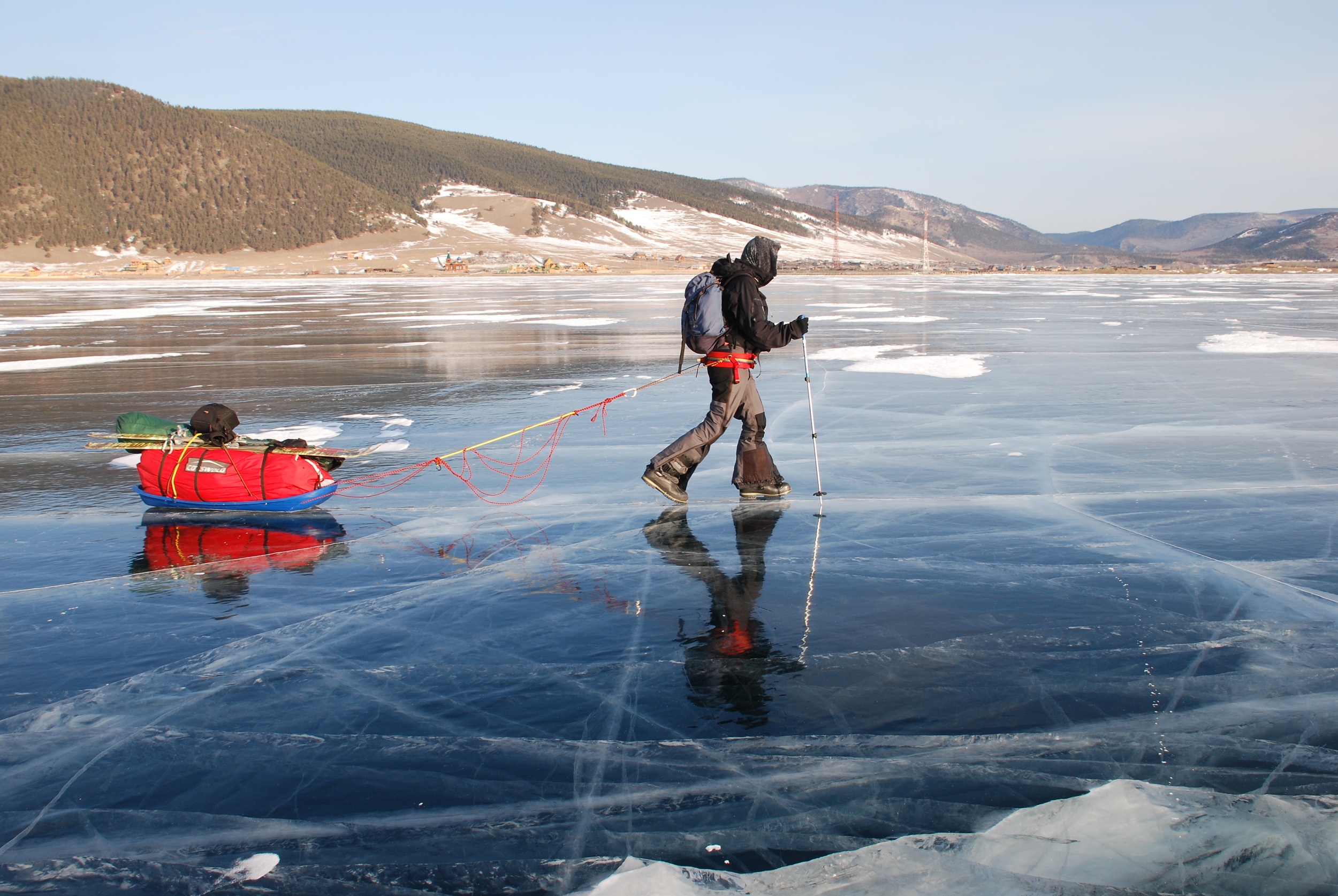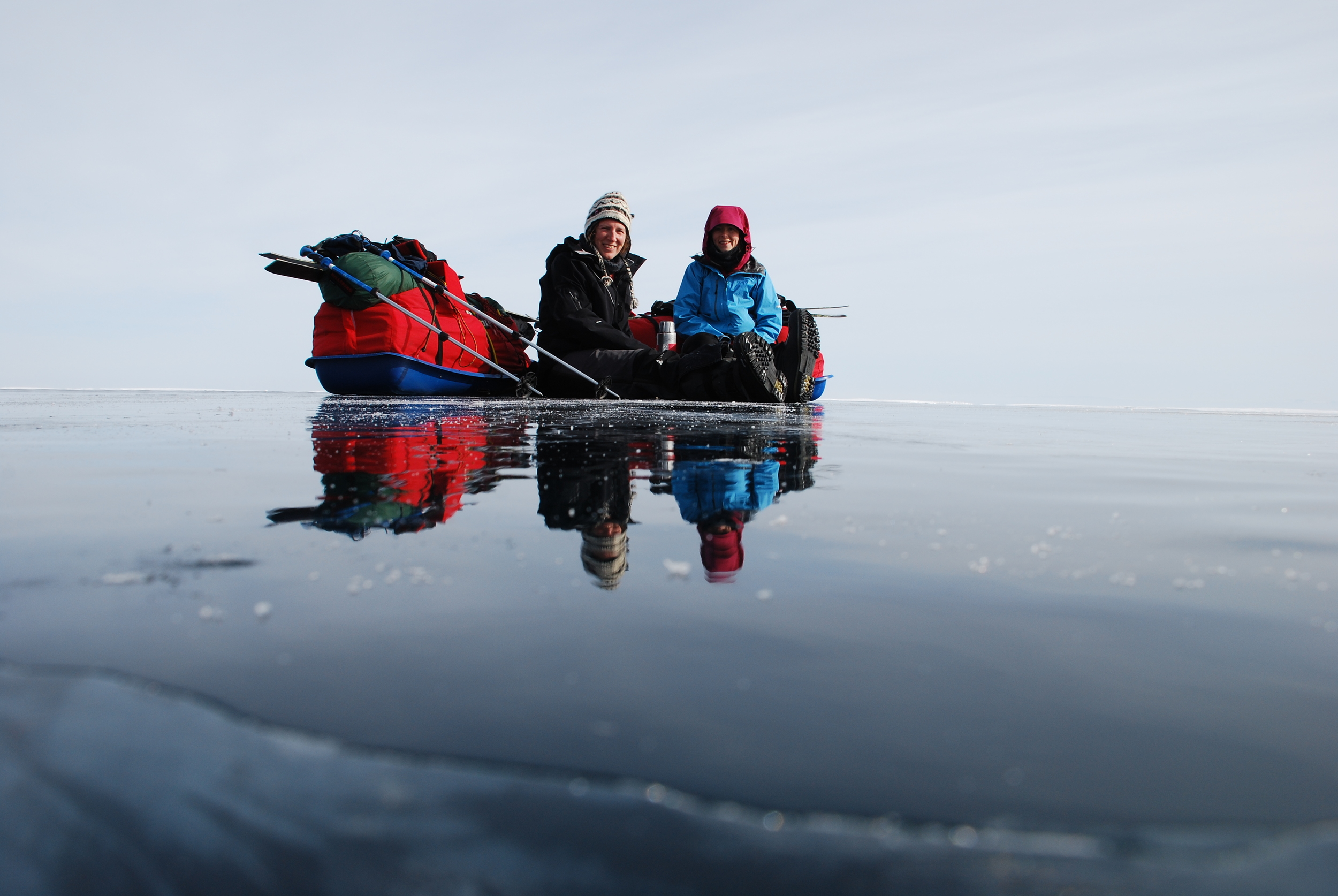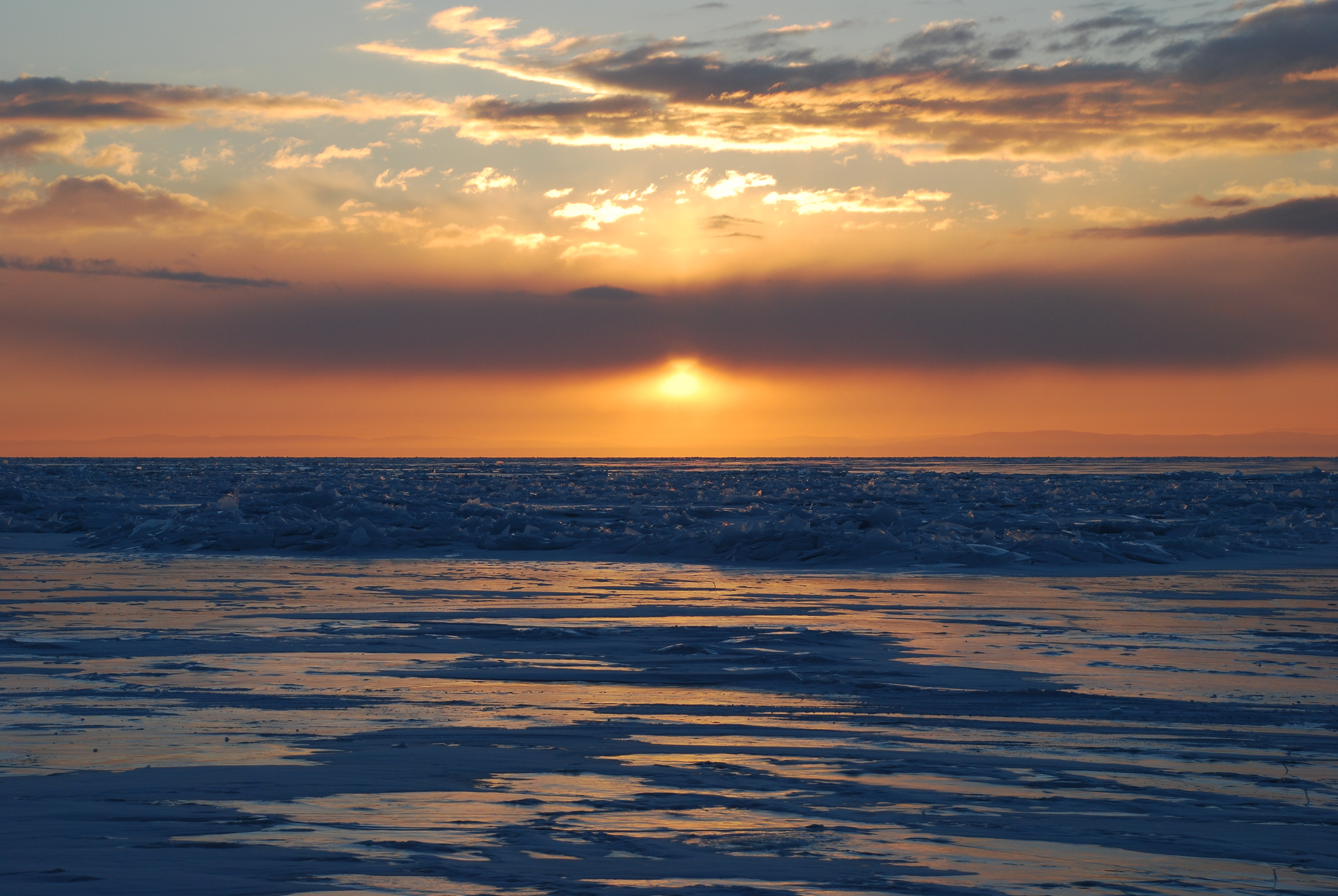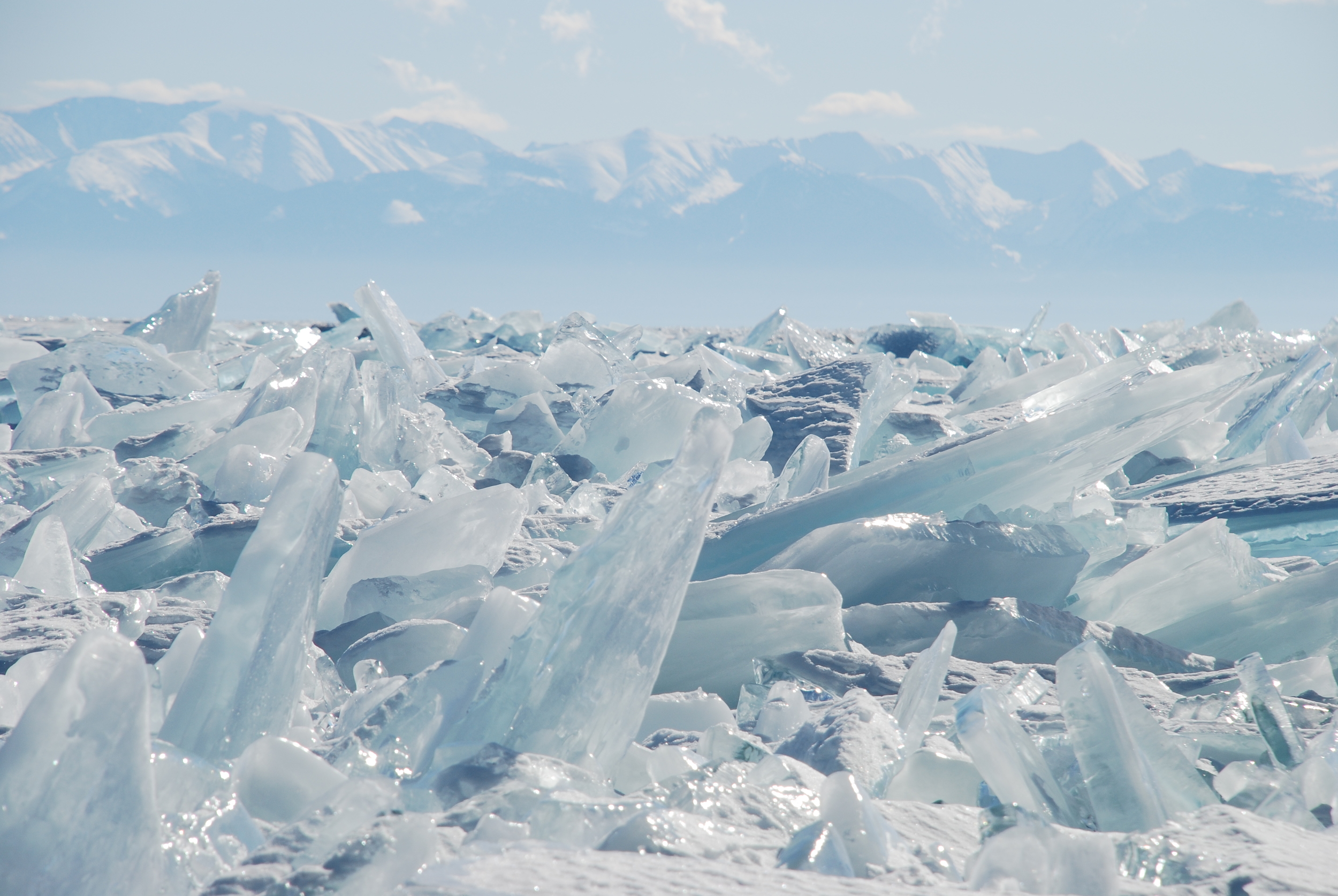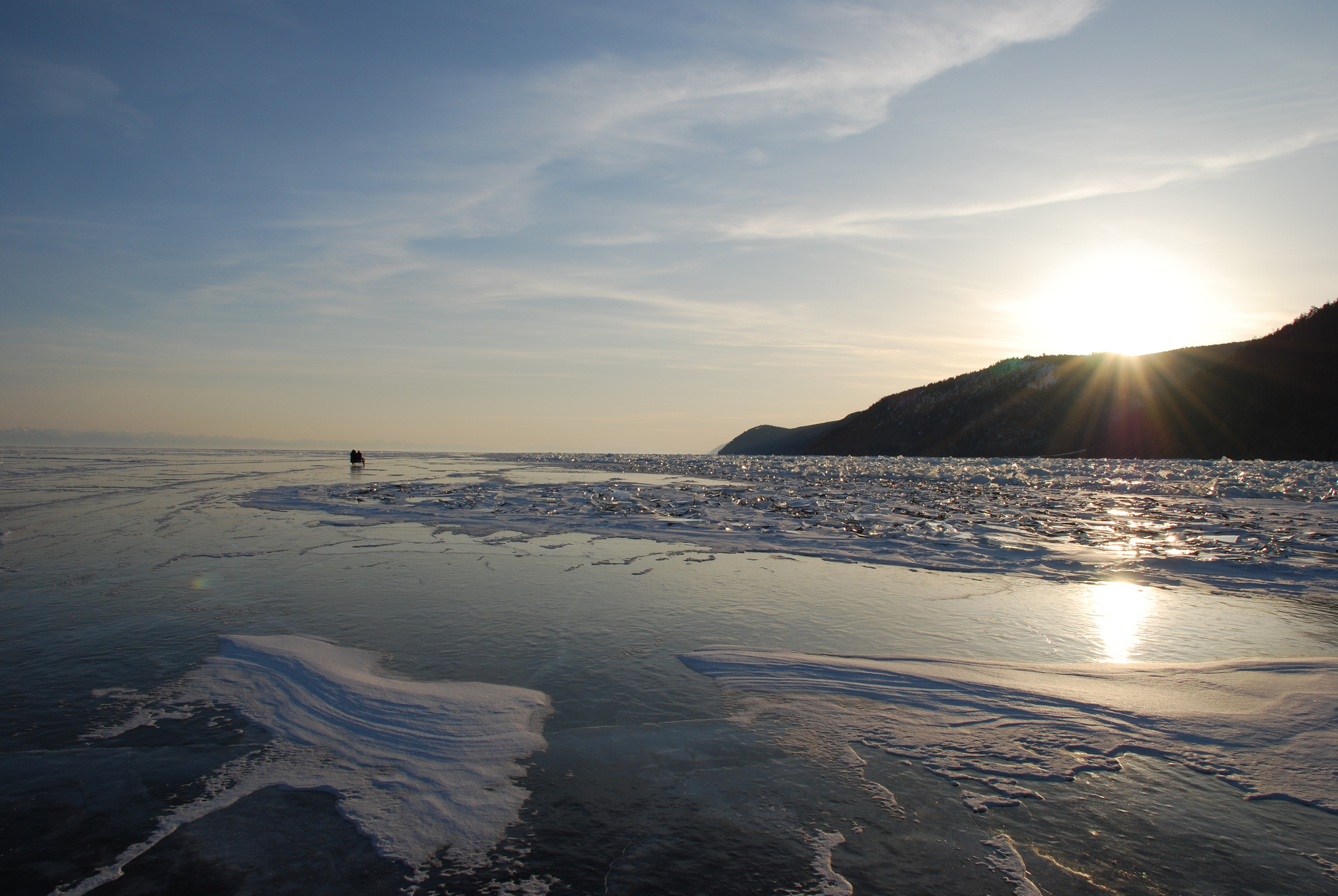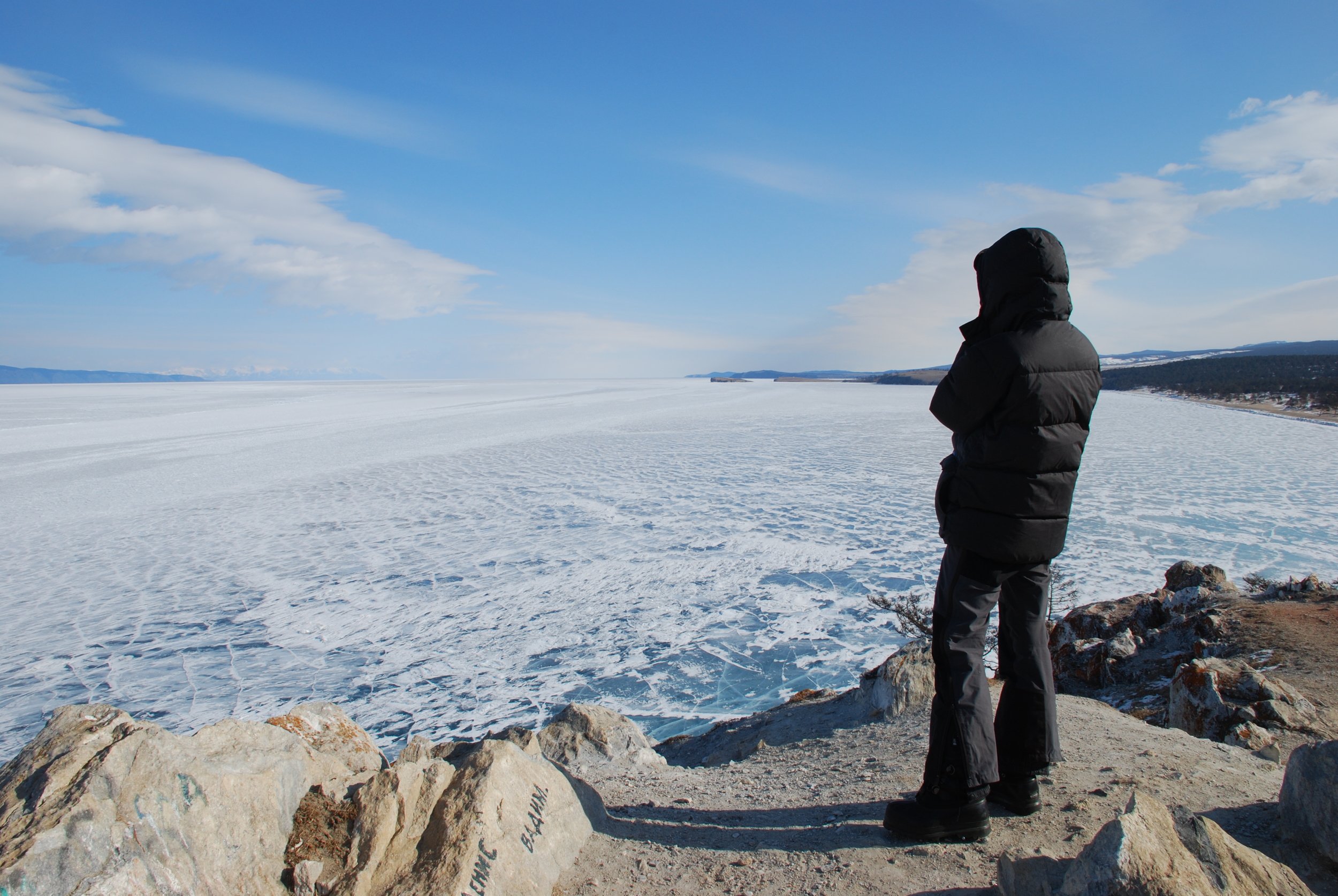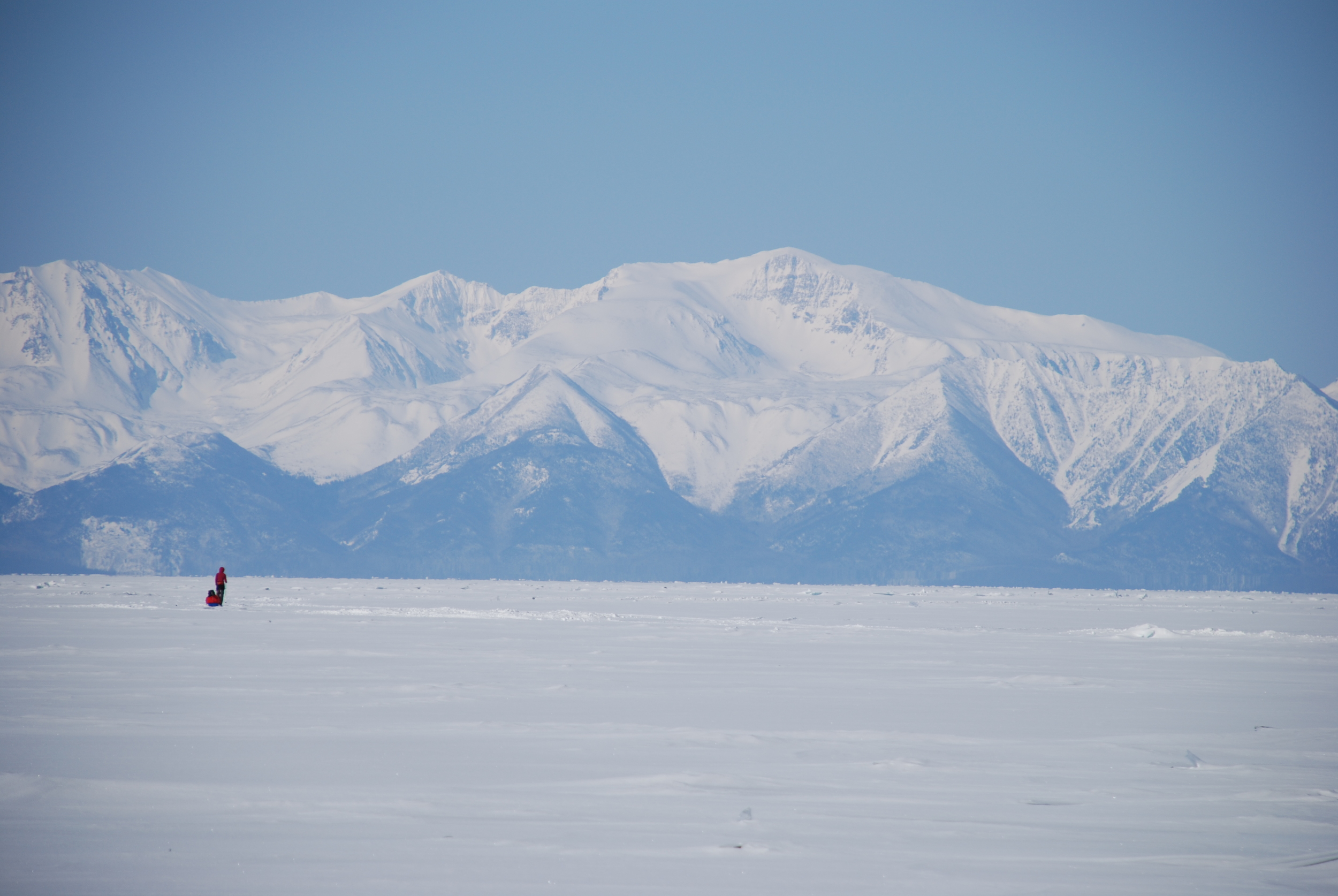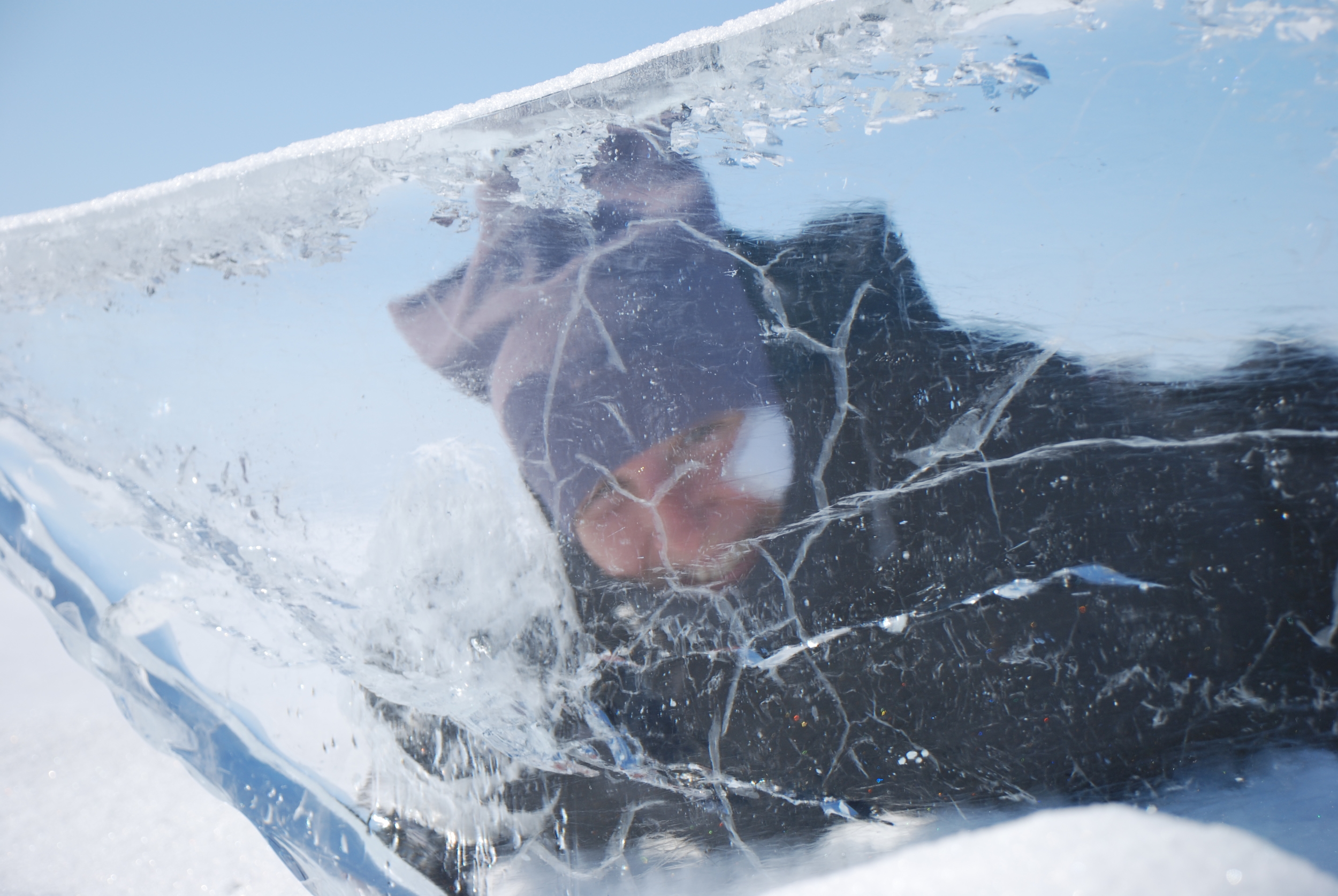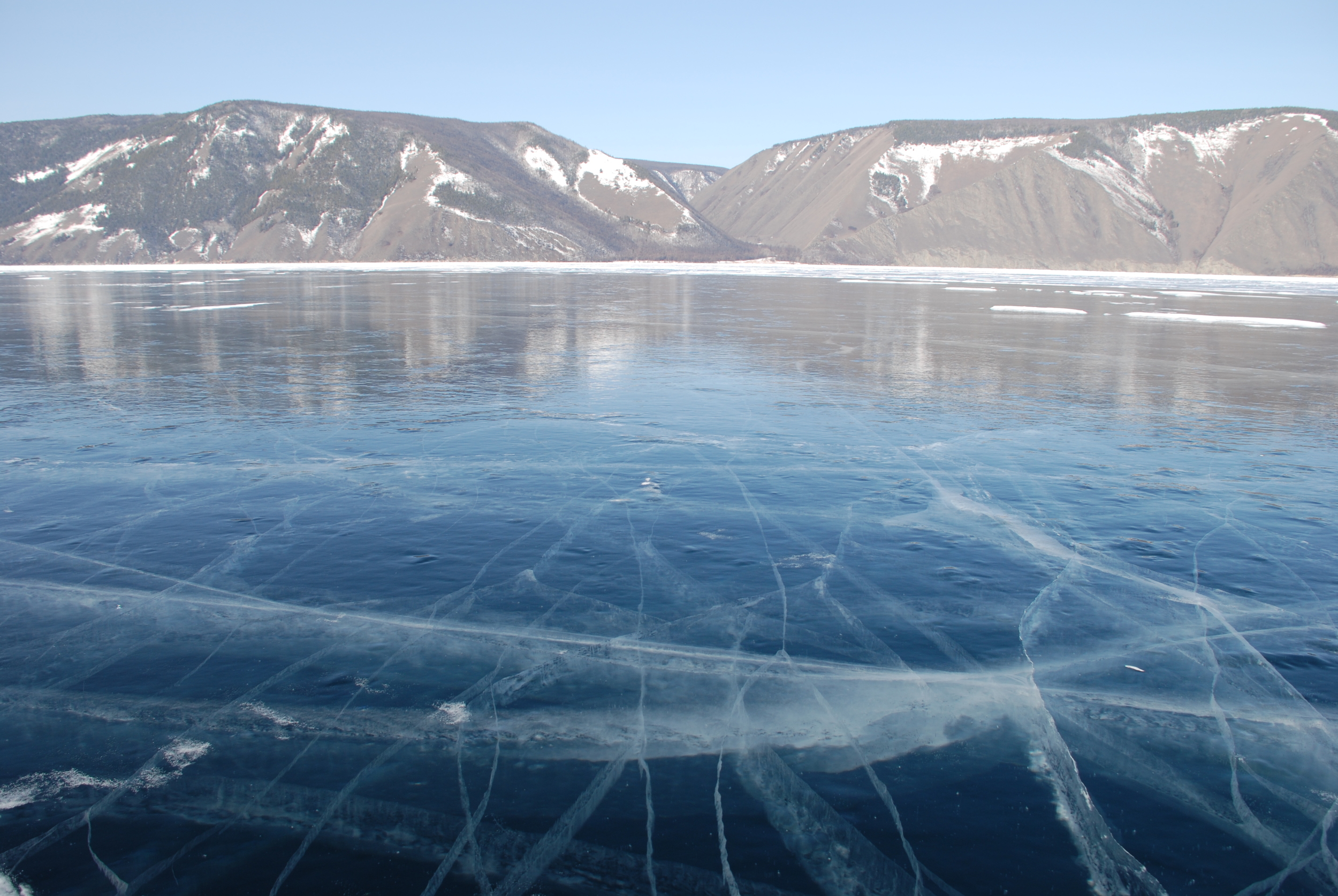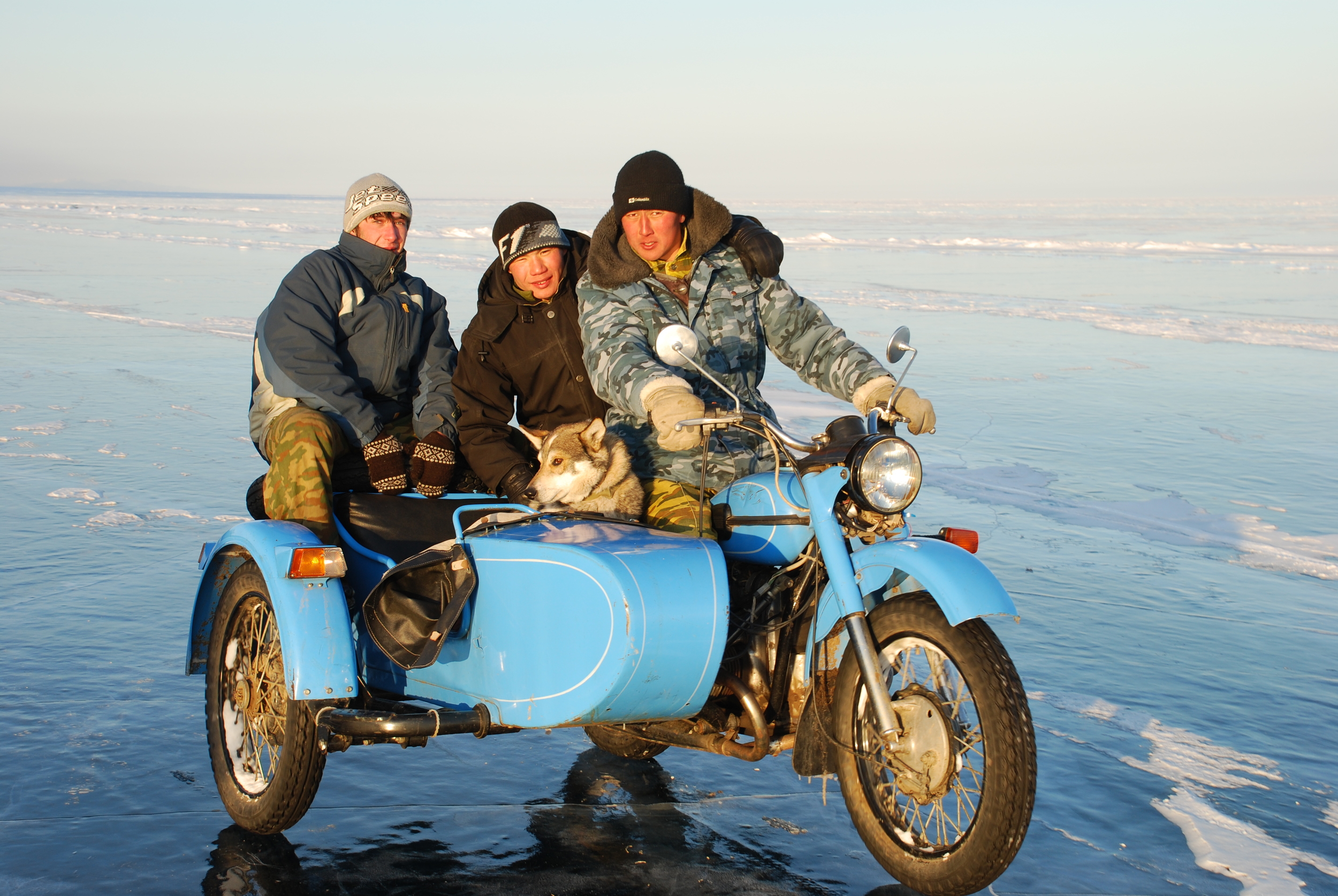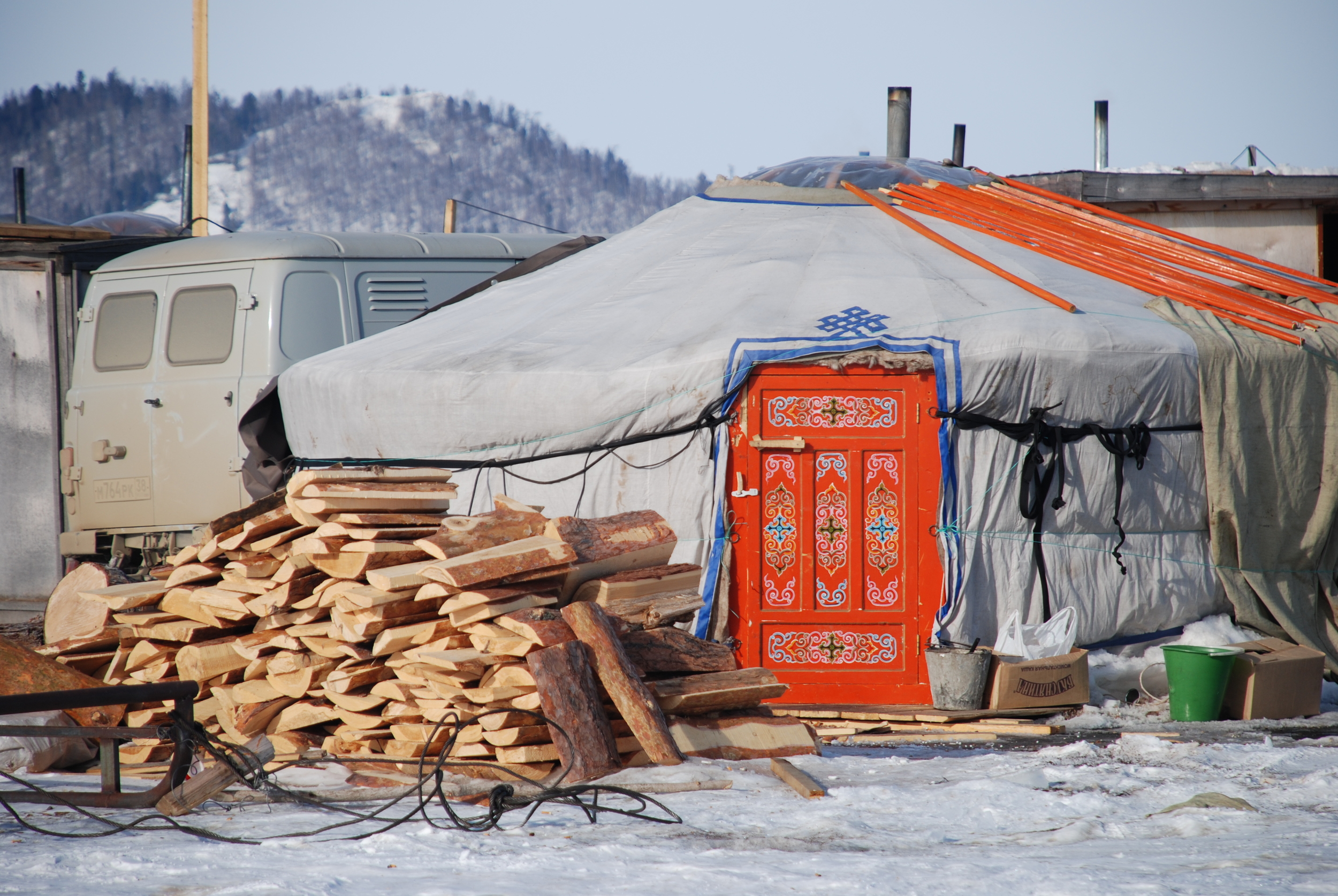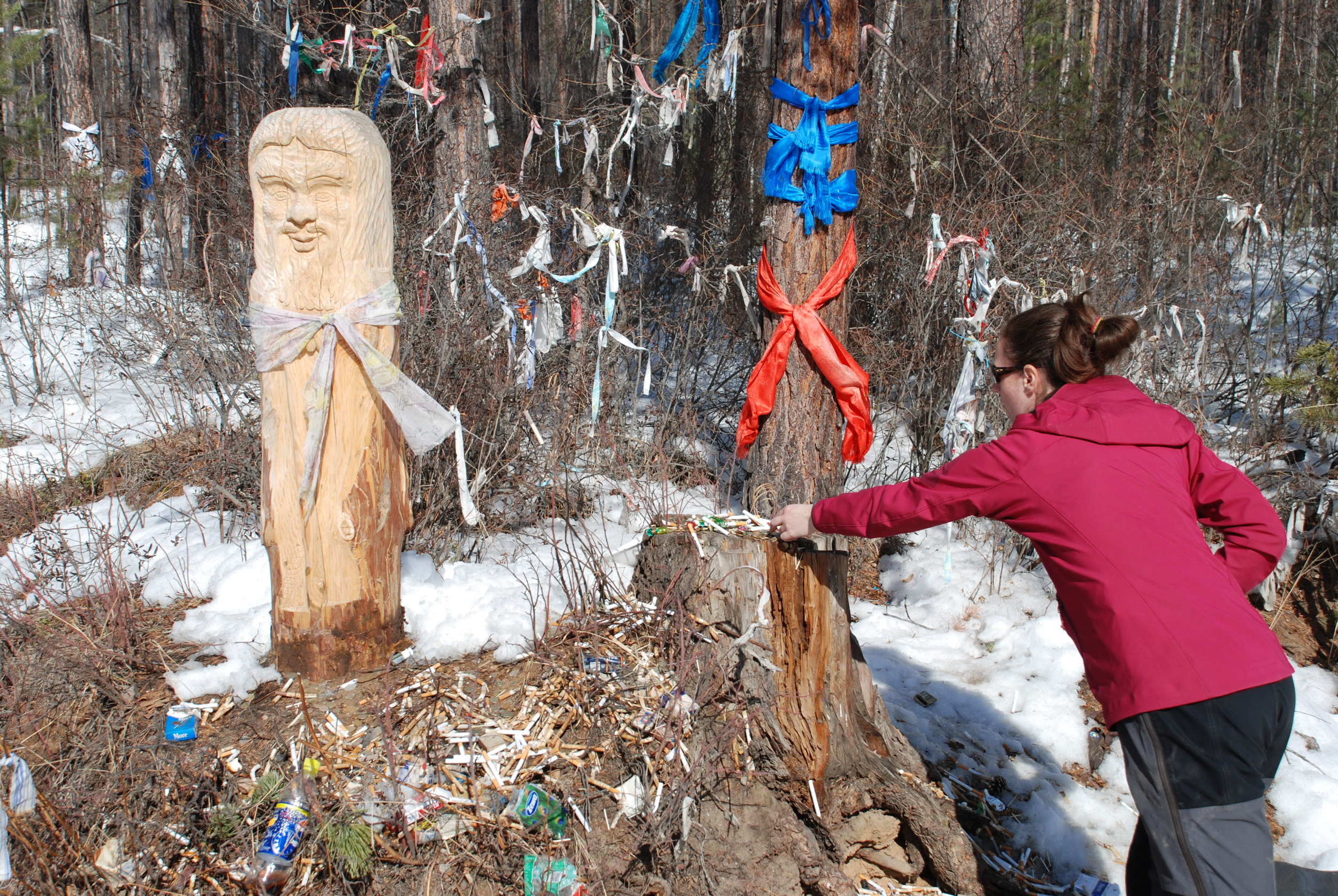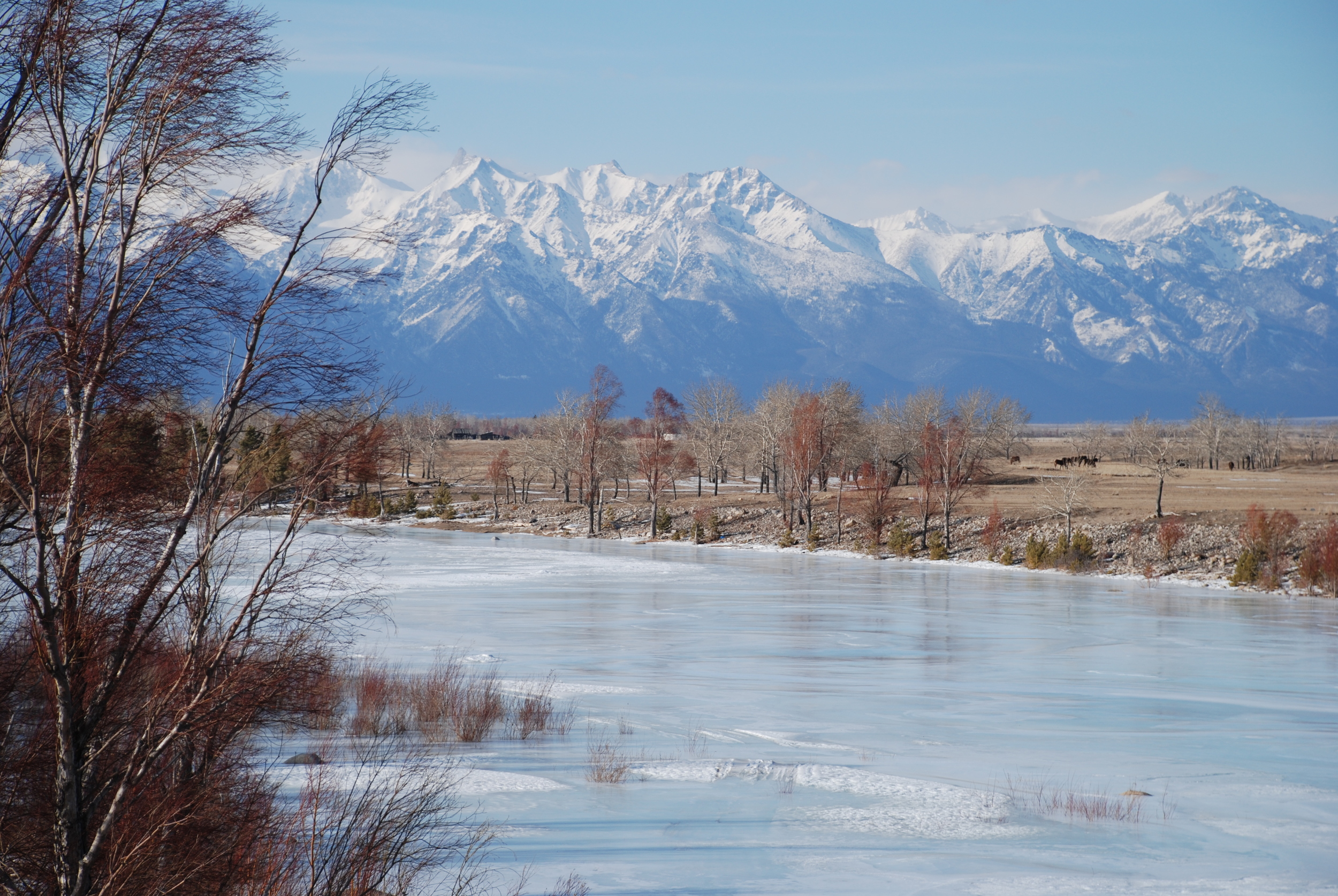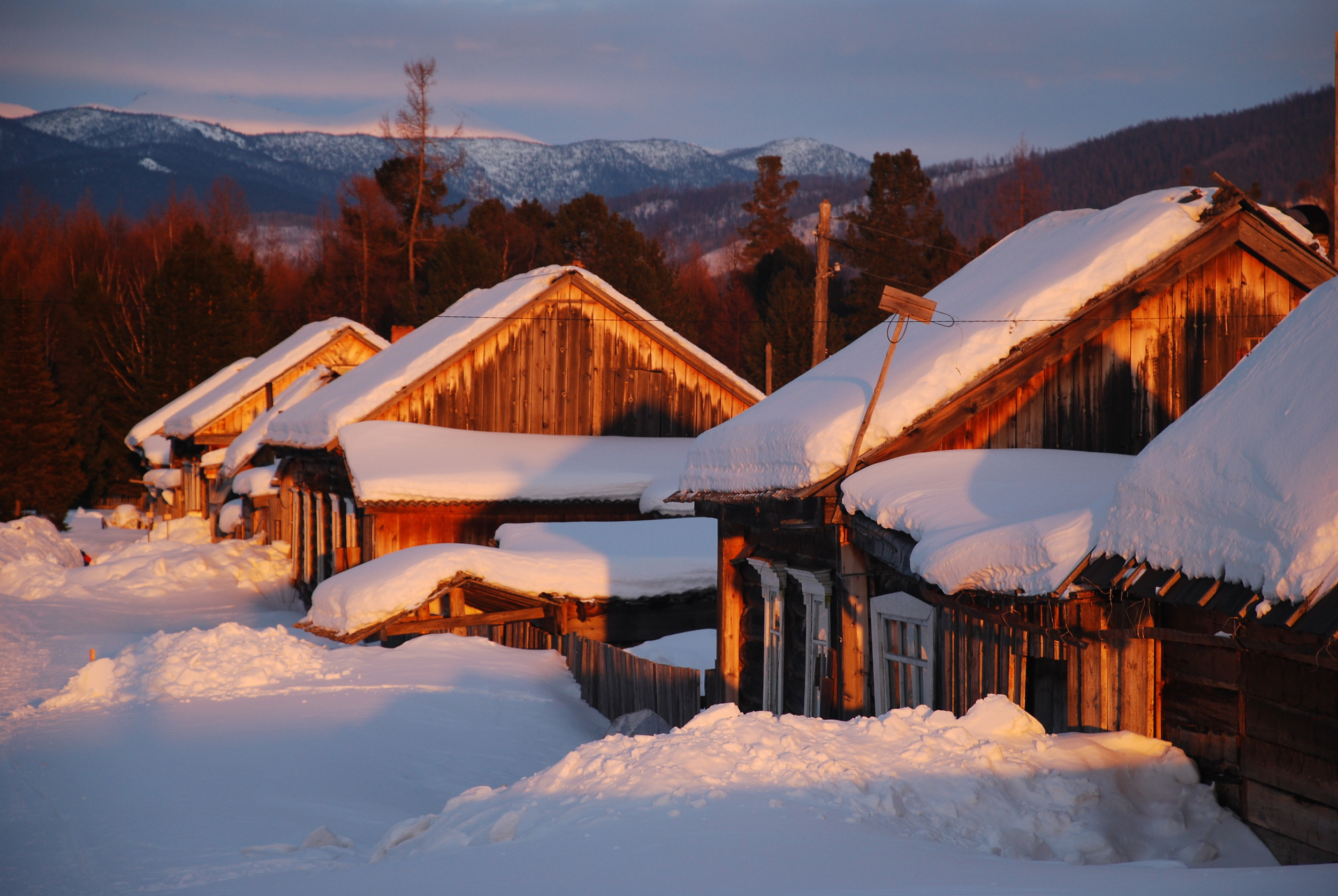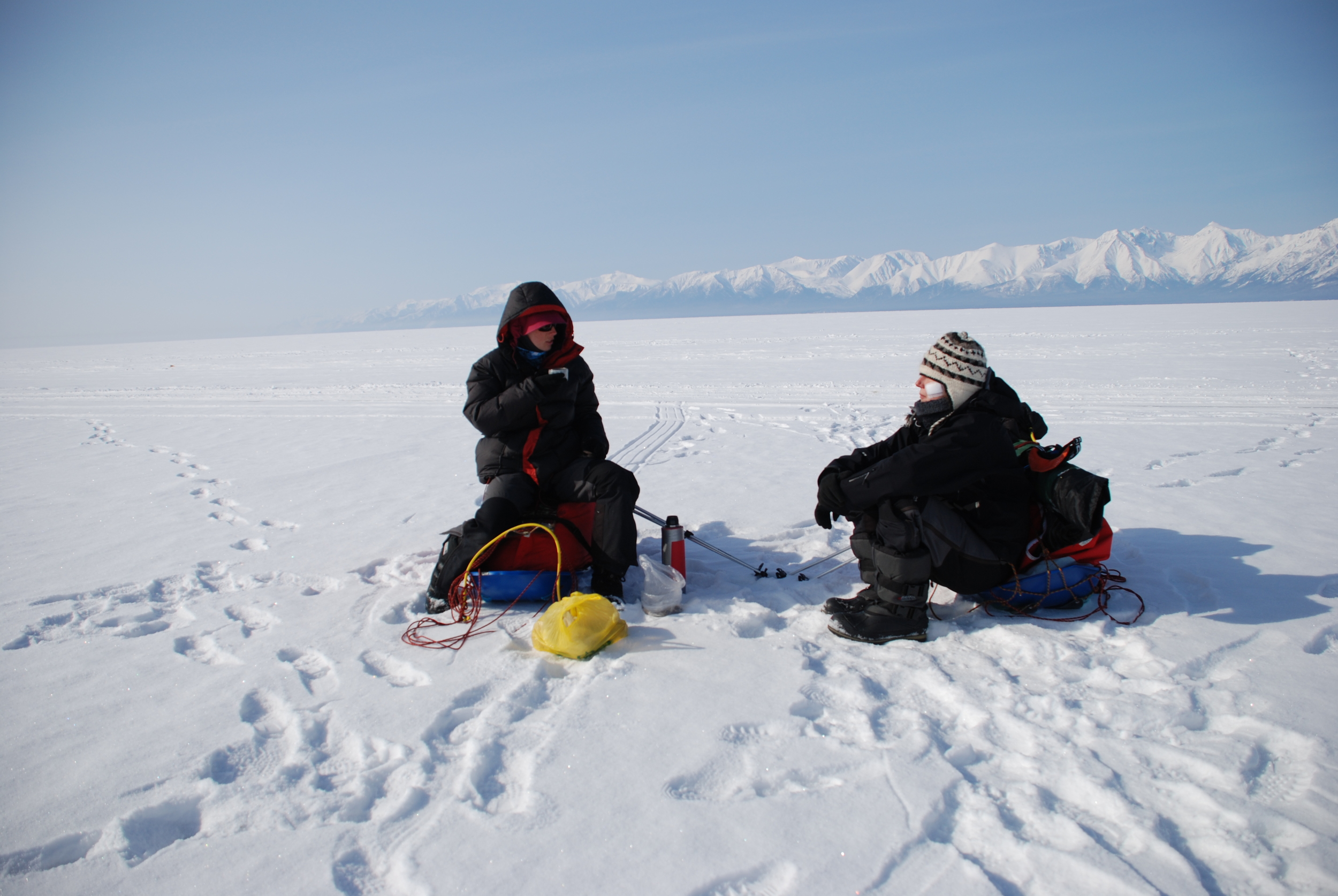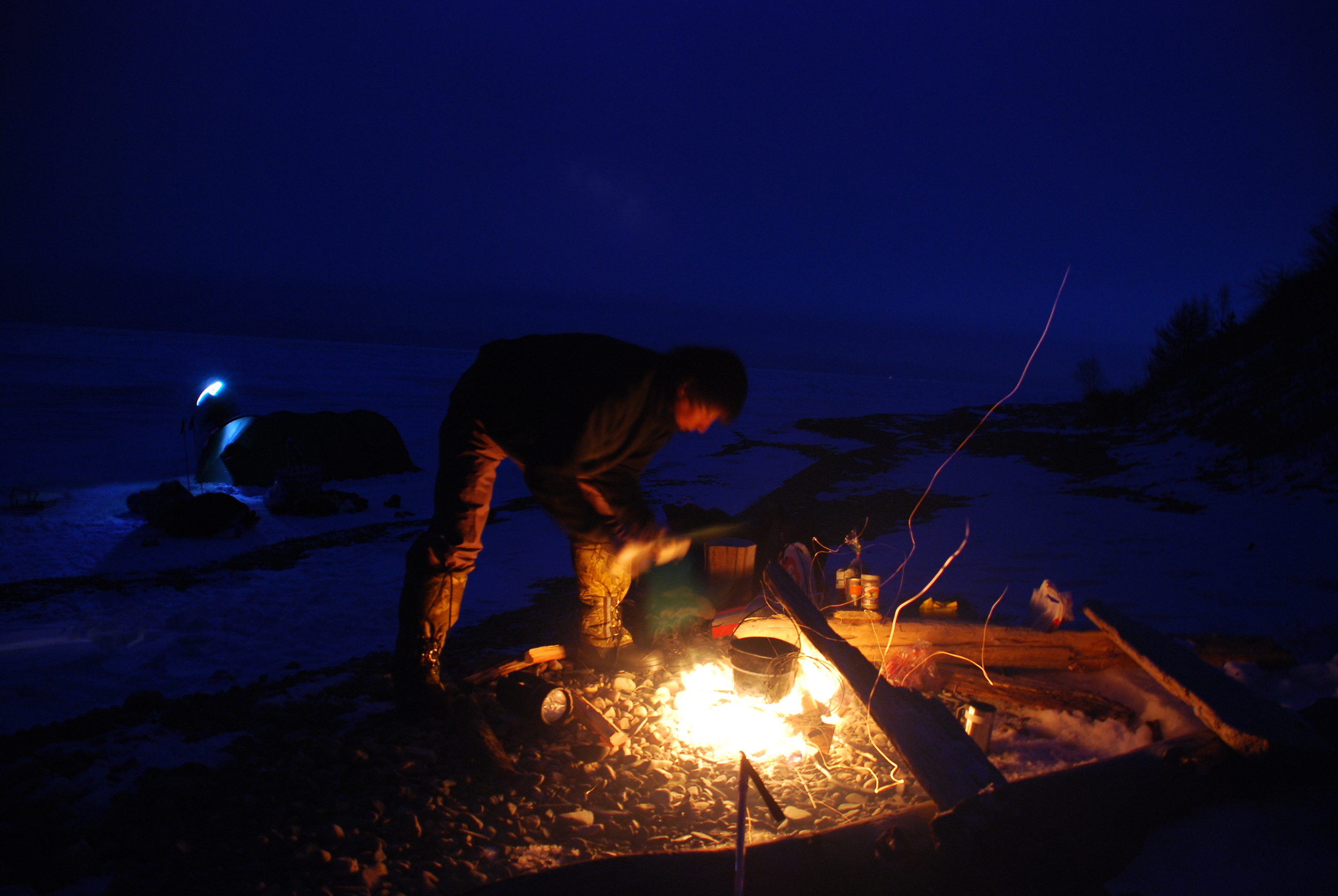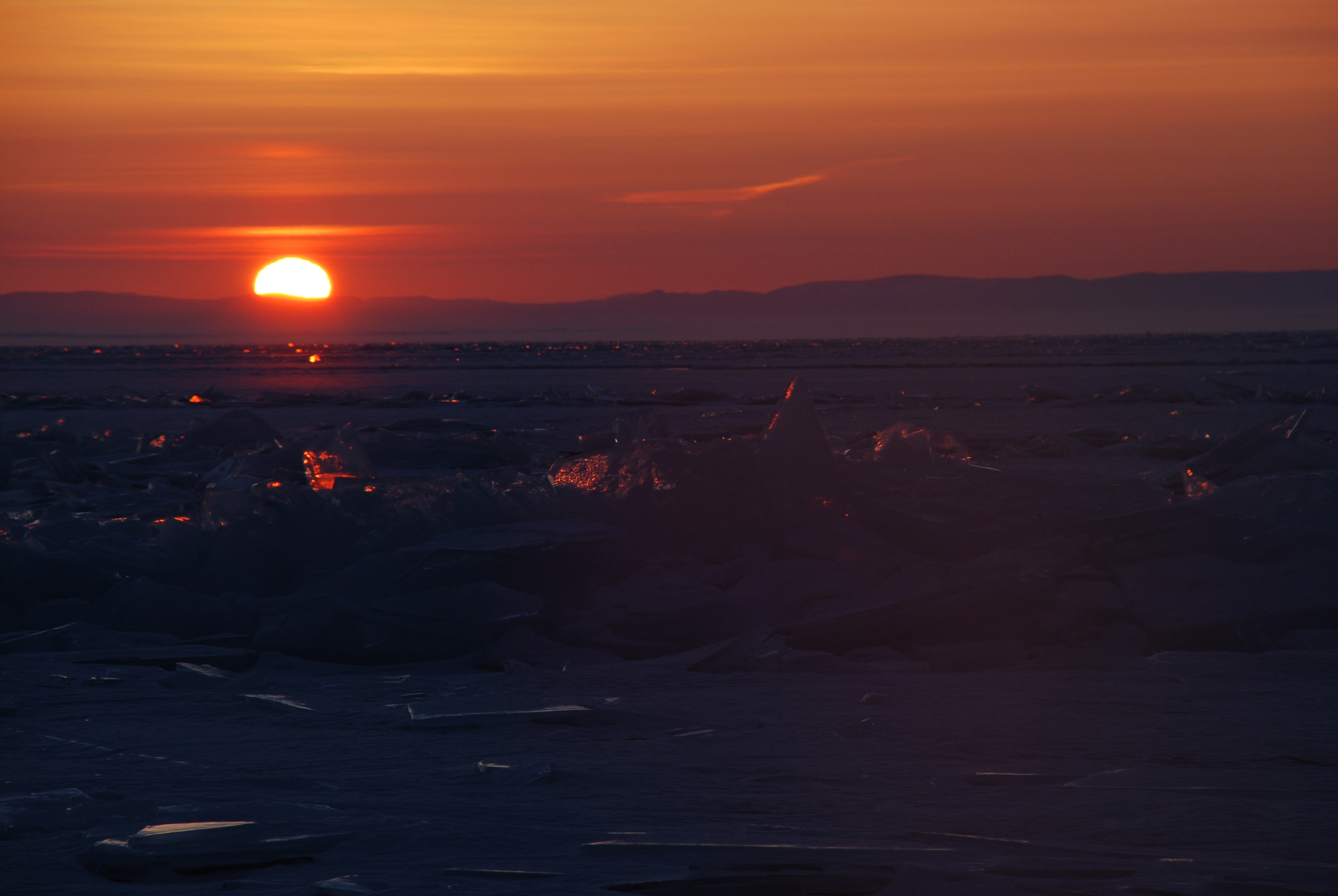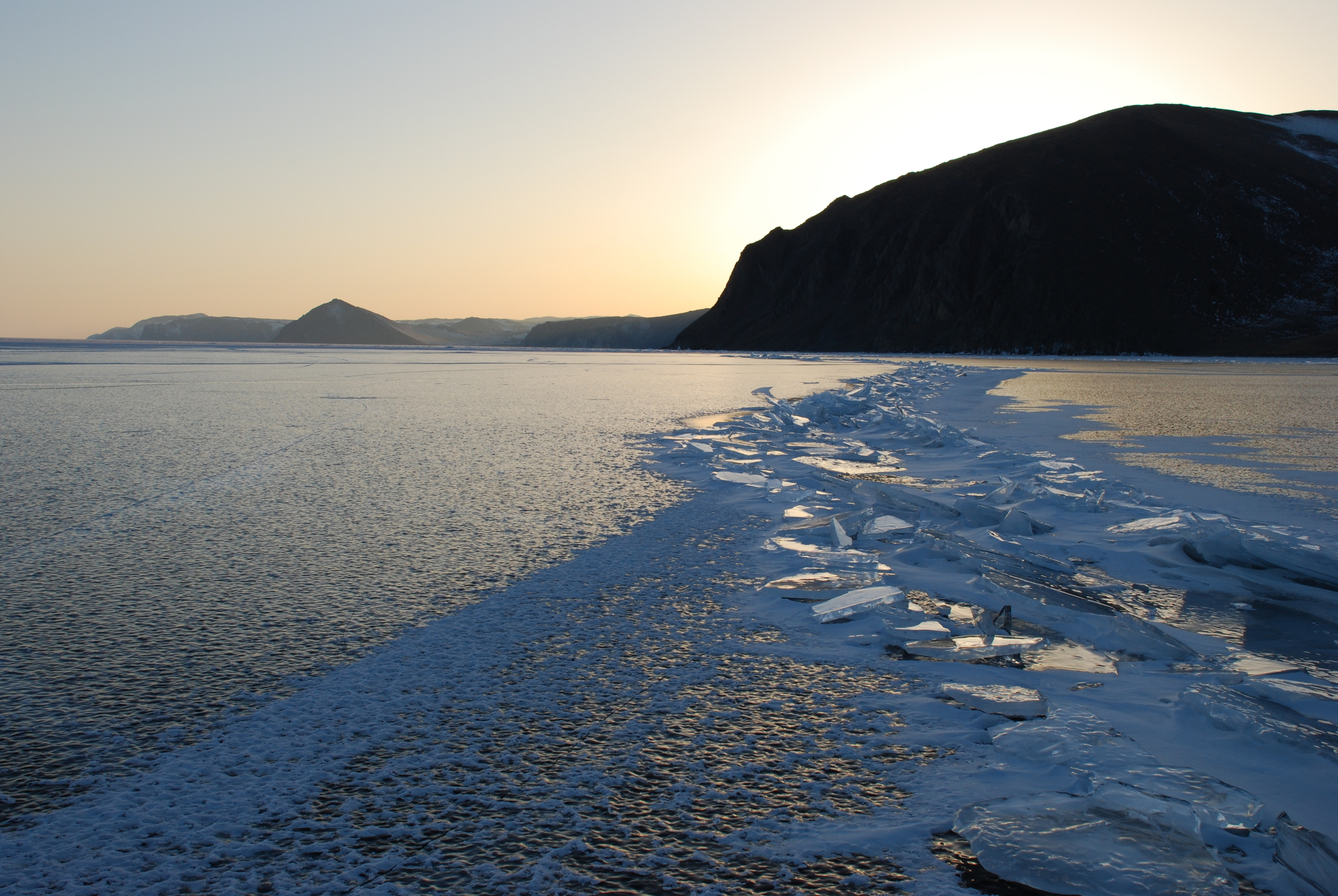Baikal 2008
For thirty days in March 2008, Felicity and a friend walked the 700km length of Lake Baikal in Siberia over its frozen surface. Sleeping in tents on the ice and visiting villages along the lake shore, they learned about life on the lake, its place and importance in Buryat culture and the unique flora and fauna that live in the lake's waters.
Lake Baikal is the oldest and deepest lake in the world. No one has yet reached the lake bed more than 1600m down. Located in south-eastern Siberia, close to the Mongolian border, the surface of the Lake freezes during the winter months with a thick layer of beautifully transparent ice.
Long and thin in shape (it is only 80km wide in places), the lake contains a fifth of the world's fresh water. Surrounded on all sides by pristine mountain ranges, the lake's relative isolation means that it is home to more than 600 species of flora and fauna that are found no where else on Earth.
The lake is of huge spiritual and cultural significance to the local Buryat people who practise a blend of Buddhism and shamanism.
Starting in Kultuk, a large village at the very southern tip of the lake, the expedition route followed the western lake shore as far as Olkhon Gates, a dramatically narrow strait at the southern tip of Olkhon Island. From Khuzhir, the main settlement on the island we returned to the ice to walk around the islands northernmost cape, Khoboy, which is a very spiritual place for local Buryats. Rounding the cape to Uzur, we set off to cross the lake as its deepest stretch to reach the tip of the Holy Nose peninsula on Lake Baikal's eastern shore.
We spent two days in the Barguzin Valley before continuing along the east shore as far as Davsha, where we headed northwest across the lake to meet the western shore once more at Baykalskoe. We then pushed on to Severobaikalsk at the northern end of the lake where the expedition ended.
The expedition's route along the length of Lake Baikal, March 2008

